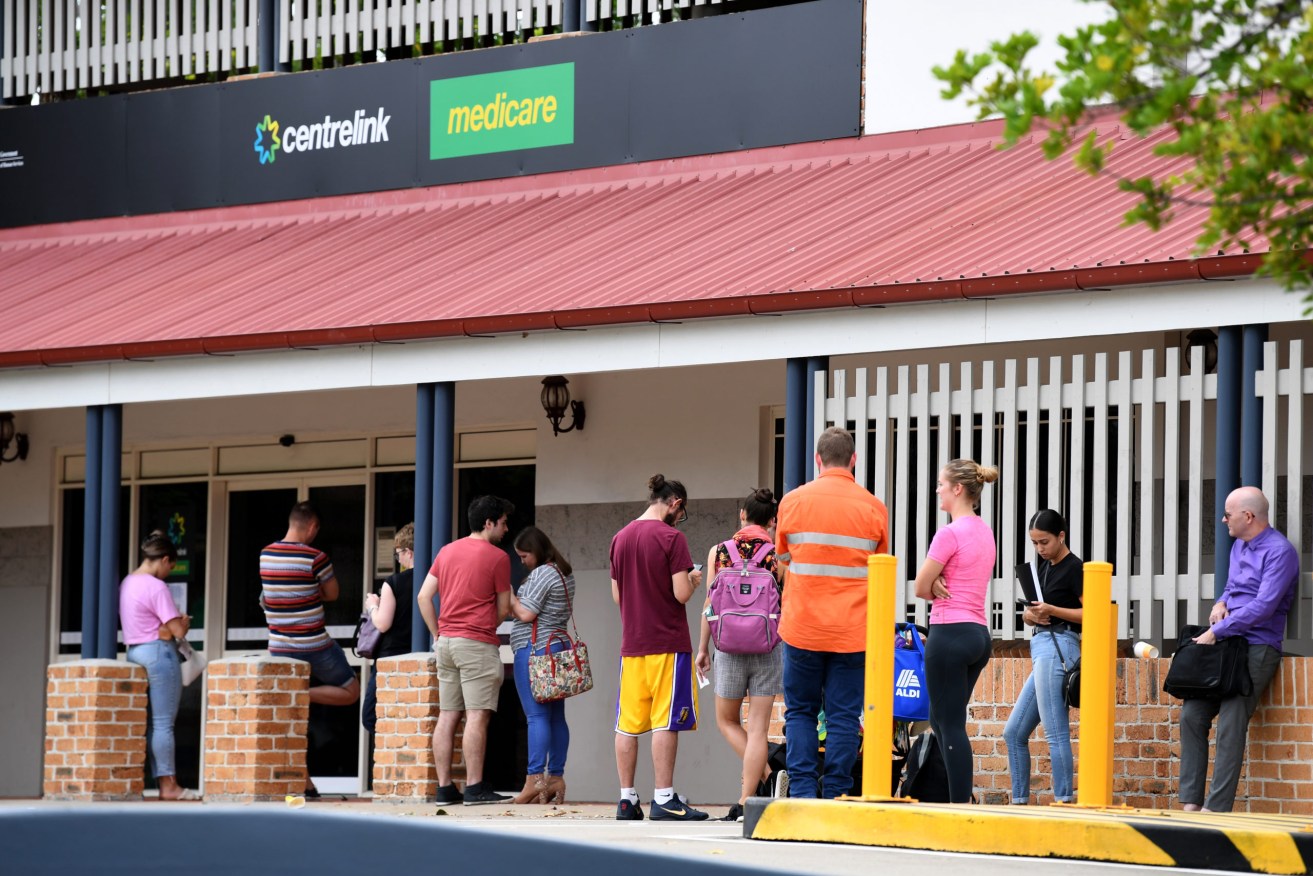JobKeeper axing leaves workers, employers on edge
The axing of the JobKeeper subsidy today heralds a nervous wait for hundreds of thousands of workers, as pandemic-hit employers try to survive without government payments and Treasury estimates that up to 150,000 people may lose their jobs.

Photo: AAP/Dan Peled
The wage subsidy was introduced on March 30 last year in a bid to stem a massive boost to the dole queue at the onset of the coronavirus pandemic.
As Treasurer Josh Frydenberg put it in parliament this week, the early months of 2020 had been a time when “Australia was staring into the abyss”.
“Where Treasury could see a situation where the unemployment rate could reach 15 per cent.
“That’s more than two million Australians who would have been unemployed.”
As the pandemic hit and the first recession since the 1990s loomed, Australians witnessed extraordinary images of tens of thousands of people lining up outside Centrelink – many for the first time in their lives.
The Reserve Bank said the wage subsidy had saved more than 700,000 jobs.
With the recession at an end, the number of people on the dole dropped from 1,319,268 at the start of 2021 to 1,166,611 a week ago.
The national unemployment rate sits at 5.8 per cent, while South Australia’s rate is the nation’s highest at 6.8 per cent.
It is expected to rise once JobKeeper ends but it is unclear how many people will shift from it to the dole, now known as JobSeeker, which is also scheduled to be less generous later in the week as the coronavirus supplement ends
Official estimates put the employment losses at between 100,000 and 150,000.
Prime Minister Scott Morrison said it was not necessarily the case that the number of unemployed would rise.
“In less than a year the number of people employed is now greater today than it was when the pandemic hit this country,” he told parliament during the week.
He said it was always intended JobKeeper would be temporary emergency assistance.
Over the period, 2.7 million people and 680,000 businesses have “graduated” off JobKeeper.
Frydenberg says while the nation has not yet emerged from the pandemic the economic recovery has been stronger than almost anywhere else in the world.
Westpac’s Justin Smirk says one figure he is closely watching is the jump in those working zero hours for economic reasons.
“At 106,700 in February compared to a monthly average of 55,100 through 2019, we see any number above 60,000 as an indication of potential job losses as JobKeeper scheme expires,” he said.
“At this stage we see the ending of JobKeeper generating a minor stalling of employment with only a very modest rise unemployment.”
Some businesses are at risk of defaulting on payments, or even folding, as they adjust to the end of JobKeeper.
Harley Dale, the chief economist at CreditorWatch, says bankruptcies and insolvencies won’t “fall off a cliff” as first anticipated because the number of businesses on JobKeeper has dived as the economy recovered.
“At the JobKeeper peak in the second and third quarters of last year, around one million businesses were receiving the payment, but this number had halved by the fourth quarter.”
He says 8000 businesses will be insolvent by the end of the second quarter of this year.
But the long-term effects won’t be as severe as first expected due to ongoing government support such as tourism and aviation packages, cheap loans for small businesses and apprentice wage subsidies.
However, the greatest uncertainty lies in how many companies are not commercially viable, which has been masked by subsidies and other support.
Labor leader Anthony Albanese says while JobKeeper must come to an end at some point, it is “unwise” to withdraw support from industries and businesses still impacted by the pandemic.
“This isn’t an academic exercise. This is real people who are going to be impacted by this.”
-with AAP




